Propargyl p-toluenesulfonate
- CAS NO.:6165-76-0
- Empirical Formula: C10H10O3S
- Molecular Weight: 210.25
- MDL number: MFCD01462194
- SAFETY DATA SHEET (SDS)
- Update Date: 2024-11-12 15:22:20
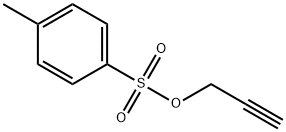
What is Propargyl p-toluenesulfonate?
Chemical properties
Clear colorless to brown liquid
The Uses of Propargyl p-toluenesulfonate
Propargyl p-toluenesulfonate is an important raw material and intermediate used in organic synthesis, pharmaceuticals, agrochemicals and dyestuff.
The Uses of Propargyl p-toluenesulfonate
Protected Propargyl. A possible genotoxic compound that can affect the bacterial and mammalian cell systems.
The Uses of Propargyl p-toluenesulfonate
Propargyl p-toluenesulfonate can be used as an initiator in the synthesis of linear and cyclic poly(2-isopropyl-2-oxazoline)s by cationic ring-opening polymerization of 2-isopropyl-2-oxazoline.
It can also be used as a reagent to synthesize:
- 2-hydroxy-4-pentynoic acid by an alkylation reaction with diethyl 2-acetamidomalonate followed by subsequent hydrolysis, decarboxylation, diazotization, and hydroxylation reactions.
- Furan derivatives by Pd-catalyzed reaction with acylchromates.
Properties of Propargyl p-toluenesulfonate
| Boiling point: | 117-121°C 0,3mm |
| Density | 1.215 g/mL at 20 °C (lit.) |
| refractive index | n |
| Flash point: | 117-121°C/0.3mm |
| storage temp. | 2-8°C |
| solubility | soluble in Chloroform, Dichloromethane, DMSO, Ethyl Acetate |
| form | Liquid |
| color | Clear colorless to brown |
| Water Solubility | Soluble in Chloroform, Dichloromethane, DMSO, Ethyl Acetate. Not miscible in water. |
| BRN | 1212957 |
Safety information for Propargyl p-toluenesulfonate
| Signal word | Warning |
| Pictogram(s) |
 Exclamation Mark Irritant GHS07 |
| GHS Hazard Statements |
H315:Skin corrosion/irritation H319:Serious eye damage/eye irritation H335:Specific target organ toxicity, single exposure;Respiratory tract irritation |
| Precautionary Statement Codes |
P261:Avoid breathing dust/fume/gas/mist/vapours/spray. P264:Wash hands thoroughly after handling. P264:Wash skin thouroughly after handling. P271:Use only outdoors or in a well-ventilated area. P280:Wear protective gloves/protective clothing/eye protection/face protection. P302+P352:IF ON SKIN: wash with plenty of soap and water. P305+P351+P338:IF IN EYES: Rinse cautiously with water for several minutes. Remove contact lenses, if present and easy to do. Continuerinsing. |
Computed Descriptors for Propargyl p-toluenesulfonate
New Products
(S)-3-Aminobutanenitrile hydrochloride 4-Methylphenylacetic acid N-Boc-D-alaninol N-BOC-D/L-ALANINOL Tert-butyl bis(2-chloroethyl)carbamate 3-Morpholino-1-(4-nitrophenyl)-5,6-dihydropyridin- 2(1H)-one Furan-2,5-Dicarboxylic Acid Tropic acid 1-Bromo-3,5-Di-Tert-Butylbenzene S-2-CHLORO PROPIONIC ACID ETHYL ISOCYANOACETATE 2-Bromo-1,3-Bis(Dimethylamino)Trimethinium Hexafluorophosphate 4-IODO BENZOIC ACID 3-NITRO-2-METHYL ANILINE 1-(2,4-DICHLOROPHENYL) ETHANAMINE (2-Hydroxyphenyl)acetonitrile 4-Bromopyrazole 2-(Cyanocyclohexyl)acetic acid 4-methoxy-3,5-dinitropyridine 1-(4-(aminomethyl)benzyl)urea hydrochloride 2-aminopropyl benzoate hydrochloride diethyl 2-(2-((tertbutoxycarbonyl)amino) ethyl)malonate tert-butyl 4- (ureidomethyl)benzylcarbamate Ethyl-2-chloro((4-methoxyphenyl)hydrazono)acetateRelated products of tetrahydrofuran
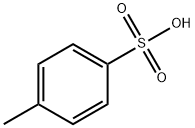

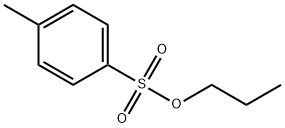
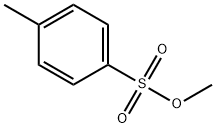
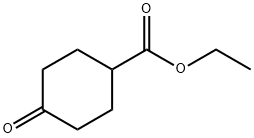
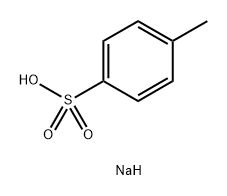

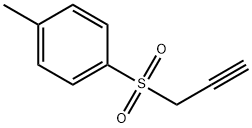
You may like
-
 Propargyl p-toluenesulfonate CAS 6165-76-0View Details
Propargyl p-toluenesulfonate CAS 6165-76-0View Details
6165-76-0 -
 Propargyl p-toluenesulfonate 97% (GC) CAS 6165-76-0View Details
Propargyl p-toluenesulfonate 97% (GC) CAS 6165-76-0View Details
6165-76-0 -
 Propargyl p-Toluenesulfonate CAS 6165-76-0View Details
Propargyl p-Toluenesulfonate CAS 6165-76-0View Details
6165-76-0 -
 Propargyl p-toluenesulfonate 95% CAS 6165-76-0View Details
Propargyl p-toluenesulfonate 95% CAS 6165-76-0View Details
6165-76-0 -
 Propargyl p-toluenesulfonate CAS 6165-76-0View Details
Propargyl p-toluenesulfonate CAS 6165-76-0View Details
6165-76-0 -
 6165-76-0 Propargyl Tosylate 98%View Details
6165-76-0 Propargyl Tosylate 98%View Details
6165-76-0 -
 6165-76-0 98%View Details
6165-76-0 98%View Details
6165-76-0 -
 118753-70-1 98+View Details
118753-70-1 98+View Details
118753-70-1
Statement: All products displayed on this website are only used for non medical purposes such as industrial applications or scientific research, and cannot be used for clinical diagnosis or treatment of humans or animals. They are not medicinal or edible.